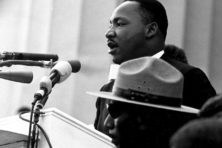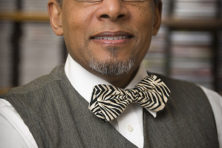By the Numbers: Martin Luther King Jr.
- Share
- Tweet
- Pin
- Share
In honor of Martin Luther King Day on Jan. 16, we look at some numbers associated with Dr. King.
15
King’s age when he entered Morehouse College. He was allowed to skip the 9th grade, and after completing his junior year in high school, he passed the Morehouse entrance exam.
25
King’s age when he was called as pastor of the Dexter Avenue Baptist Church in Montgomery, Ala, in 1954.
29
The number of times King was jailed.
35
King’s age when he was awarded the Nobel Peace Prize.
39
His age at the time of his assassination on April 4, 1968.
99
The number of years 40-year-old James Earl Ray was sentenced to serve after pleading guilty on March 10, 1969, to the first degree murder of King.
381
The number of days blacks in Montgomery, Ala., boycotted the buses, until the Supreme Court ruling against segregation in transportation.
1955
The year he was recruited to be the spokesperson for the bus boycott in Montgomery, Ala.
1956
The year his home in Montgomery was bombed (on Jan. 30). No one was injured. It was the first of many attempts or plots against his life.
1957
The year he was elected president of the Southern Christian Leadership Conference, a position he would hold until his murder.
1958
The year of the first assassination attempt on King. On Sept. 20, 1958, he was signing copies of his book Stride Toward Freedom at a Harlem bookstore when a demented woman by the name of Izola Curry plunged a seven-inch letter opener into his chest, just missing his aorta.
1965
The year Congress passed the Voting Rights Act, ending final barriers for disenfranchised black Americans. The legislation’s passage was directly related to the King-led March for Voting Rights from Selma to Montgomery.
1971
The year Martin Luther King, Jr. Day was established.
1986
The year Martin Luther King, Jr. Day became a federal holiday.
2011
The year the Martin Luther King, Jr. Memorial was dedicated on the National Mall in Washington, D.C.
Source: The Autobiography of Martin Luther King, Jr.; martinlutherking.org; thekingcenter.org; and the national archives at archives.gov; kingencyclopedia.stanford.edu/.



